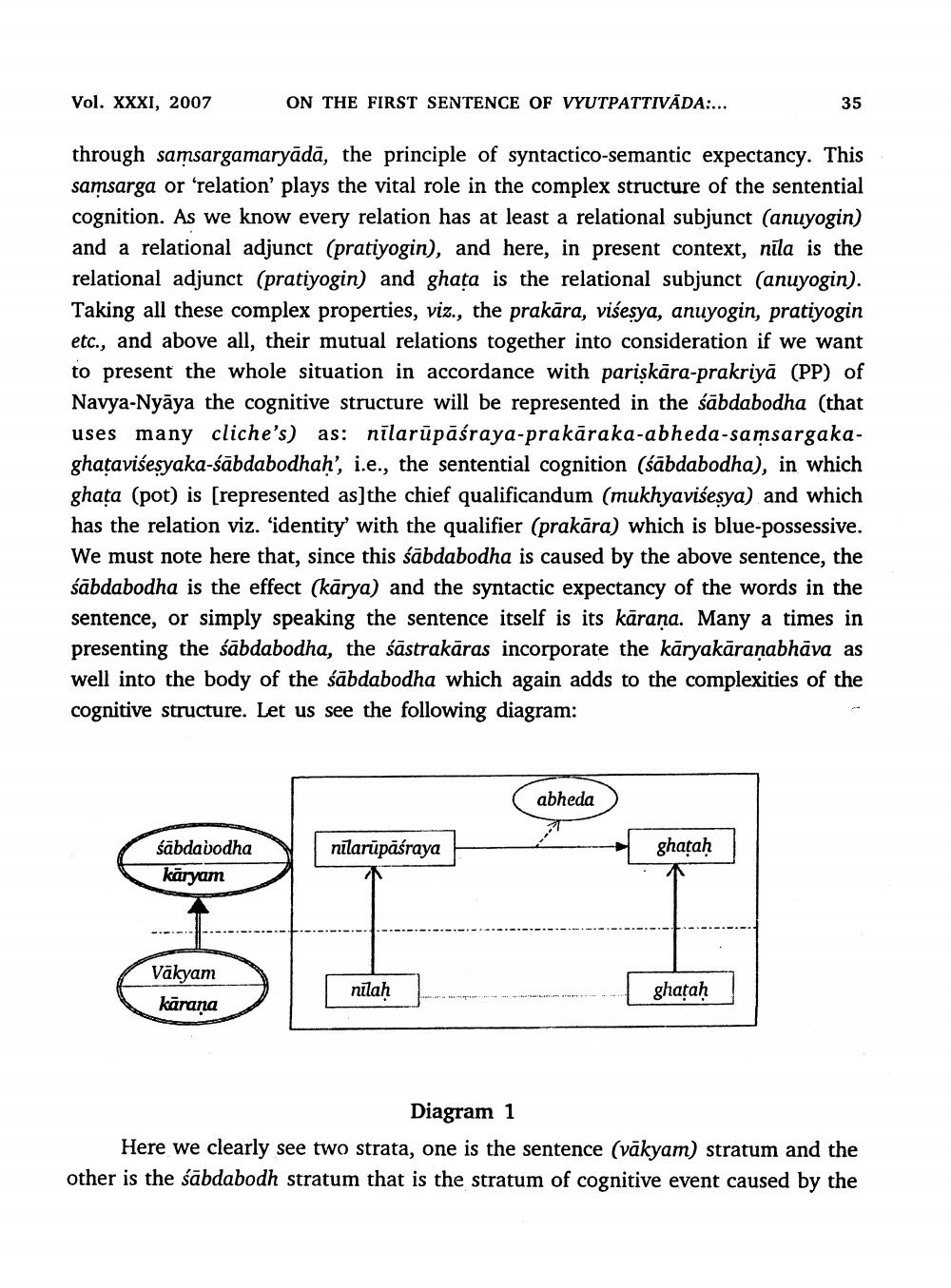________________
Vol. XXXI, 2007
ON THE FIRST SENTENCE OF VYUTPATTIVĀDA:...
35
through samsargamaryādā, the principle of syntactico-semantic expectancy. This samsarga or 'relation' plays the vital role in the complex structure of the sentential cognition. As we know every relation has at least a relational subjunct (anuyogin) and a relational adjunct (pratiyogin), and here, in present context, nila is the relational adjunct (pratiyogin) and ghata is the relational subjunct (anuyogin). Taking all these complex properties, viz., the prakāra, višesya, anuyogin, pratiyogin etc., and above all, their mutual relations together into consideration if we want to present the whole situation in accordance with pariskāra-prakriyā (PP) of Navya-Nyāya the cognitive structure will be represented in the sābdabodha (that uses many cliche's) as: nilarūpāśraya-prakāraka-abheda-samsargakaghatavišesyaka-śābdabodhah', i.e., the sentential cognition (śābdabodha), in which ghata (pot) is [represented as]the chief qualificandum (mukhyavisesya) and which has the relation viz. 'identity' with the qualifier (prakāra) which is blue-possessive. We must note here that, since this šābdabodha is caused by the above sentence, the śābdabodha is the effect (kārya) and the syntactic expectancy of the words in the sentence, or simply speaking the sentence itself is its kāraņa. Many a times in presenting the sābdabodha, the śāstrakāras incorporate the karyakaranabhāva as well into the body of the śābdabodha which again adds to the complexities of the cognitive structure. Let us see the following diagram:
abheda
nilarūpāśraya
ghatah
śābda vodha karyam
Väkyam kāraņa
nilah
ghataḥ
Diagram 1 Here we clearly see two strata, one is the sentence (vākyam) stratum and the other is the sābdabodh stratum that is the stratum of cognitive event caused by the




